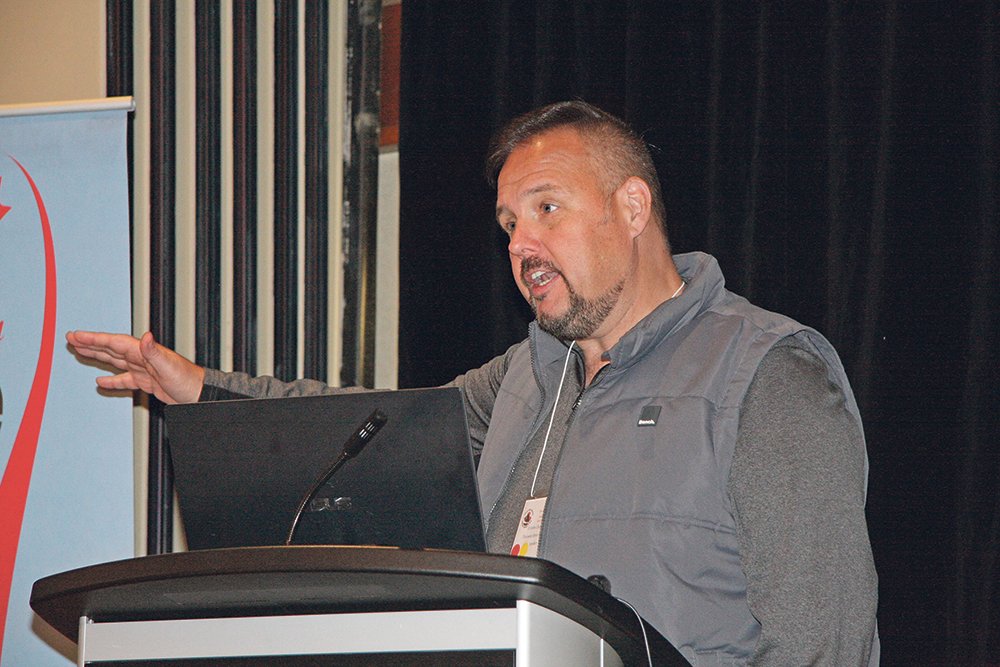Bison designed to fight climate change, with fewer emissions

The ancient animal has been living in hot and challenging environments for millennia and will even reduce fire risk
Bison are likely well suited to a warming climate, says Dr. John Church, research chair in cattle industry sustainability at Thompson Rivers University.
“The heat’s coming. I think we’re all starting to appreciate that,” he told the Canadian Bison Association annual conference. “Of the species that we raise for livestock I’m probably the least worried about bison.”
That is because history has shown bison to be resilient through other climate changes, he said.
Cave paintings in Spain that date back 36,000 years clearly show bison, he said. In Europe, bison are revered and many there think bison are the best way to fight climate change.
Fires around the world have drawn headlines for their size and how much damage they have caused. In Spain, research has found that bison work better than sheep to get under brush and help reduce fuel loads in forests, Church said.
“There are 18 different research herds in Spain all being used to suppress fires,” he said.
Using more bison, which eat 40 kilograms per day, on grasslands could help suppress more wildfires, too.
Church said bison crossed over the Bering Strait to North America thousands of years ago and have remained largely unchanged.
“They’ve already survived the six-degree warming in the fossil record,” he said.
More recent events such as the heat dome that so drastically affected British Columbia after a winter with the coldest polar vortex point to the need for livestock that can deal with climate whiplash.
Church said in 2017, thousands of cattle died in a California heat wave and while many were dairy animals a lot of beef cows died as well. Many of them were Black Angus.
He said dark coats are a factor in heat stress and research is looking at how to deal with this.
But he said there are bison herds in Texas, where it routinely hits more than 38 C, that have existed since the late 1800s without much problem.
The coats on those bison are light coloured and producers are not trying to turn them black, he noted.
Australia has gone for Speckle Park cattle in a big way because they reflect heat rather than absorb it.
Church showed thermal images comparing a Speckle Park and a Black Angus.
“There’s at least a seven-degree difference on a 20-degree day,” he said. “The black coat solar loads while the white coat reflects the heat.”
As part of his work Church is questioning why black coats became the fashion.
“We might want to think about what we’re doing,” he said.
On the other side of the equation, bison do well in snow because unlike cattle they eat less when it gets colder.
Russian research has shown that bison hoofs play a critical role in tamping down snow and helping to preserve the permafrost. There is methane gas trapped in that permafrost that shouldn’t be released.
Church said bison do release methane but less than beef cattle because they digest poor quality forage more efficiently and because their metabolic rate drops in winter.
He said bison would likely eat the seaweed that has been found to substantially reduce methane emissions from cattle. Industry just has to find a way to deliver it in a form that bison will ingest.
“There’s no reason why bison wouldn’t eat it,” he said. “The cows absolutely love it.
“I think if we’re really concerned about methane…the amount coming from bison would be inconsequential.”
Church said all livestock producers have to be prepared to do things differently.
“We’re going to have to get a whole lot more resilient and a whole lot more sustainable,” he said.
Source: producer.com

